A caring look at IT jobs
People from other fields tend to think that a career in IT is associated with high salaries, premiums for signing contracts, flexible schedules and modern offices that have ping-pong tables, coffee machines and unlimited food for employees.
But hard-working IT-specialists are familiar with the other side of the coin. Changes in the IT industry occur "as in a pressure cooker", wages and employment opportunities change at the whim of market cycles. The skills demanded today are already becoming a heavy burden tomorrow, and the threat of outsourcing appears before every seemingly protected employee.
The ups and downs of the IT labor market in the first 50 years of its existence have provided caricaturist John Closner with many ideas. Let's take a look at the past and see what has changed (and has not changed) over the years.
')
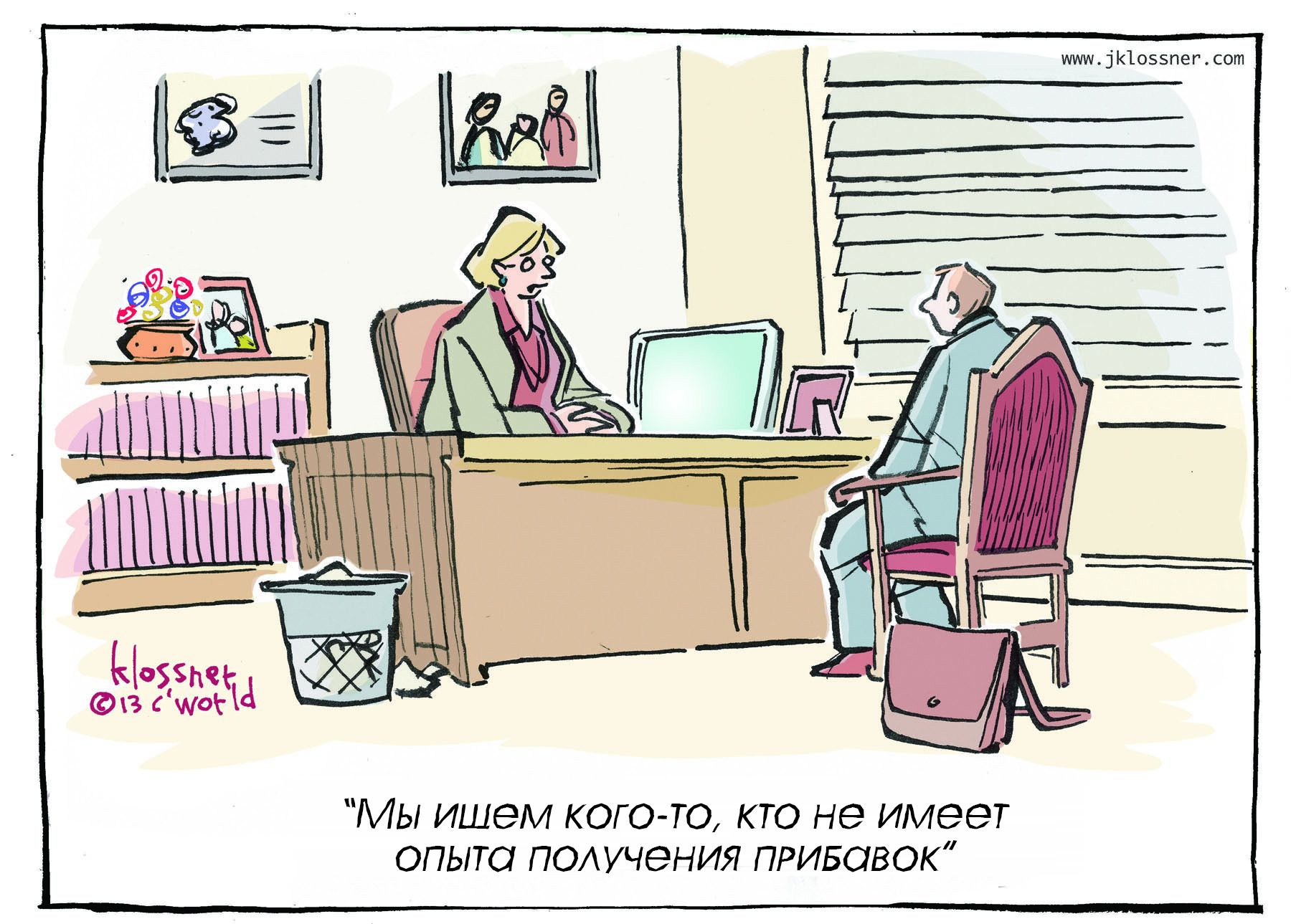
In the late nineties, Microsoft was embroiled in an eight-year lawsuit with long-term contractors, also called "permatemps". IT entrepreneurs began to wonder whether it was a mistake to classify part of workers as contractors if they worked together full time and performed the same functions. And the editorial caricature in June 1999 suggested that it might not be so easy to draw a dividing line.

Caricature of 1999: Is a pizzeria courier considered an IT employee?
As in any other profession, IT has its own unique problems, ups and downs. But regardless of the circumstances, the hiring managers, filled with enthusiasm, are always able to look at the situation from the bright side.

Caricature 1999: The hiring manager campaigns.
Bubbles and the inevitability of the fact that they will explode one day seem to be a part of life in IT. However, the end of the dotcom boom in the early 2000s was especially depressing.
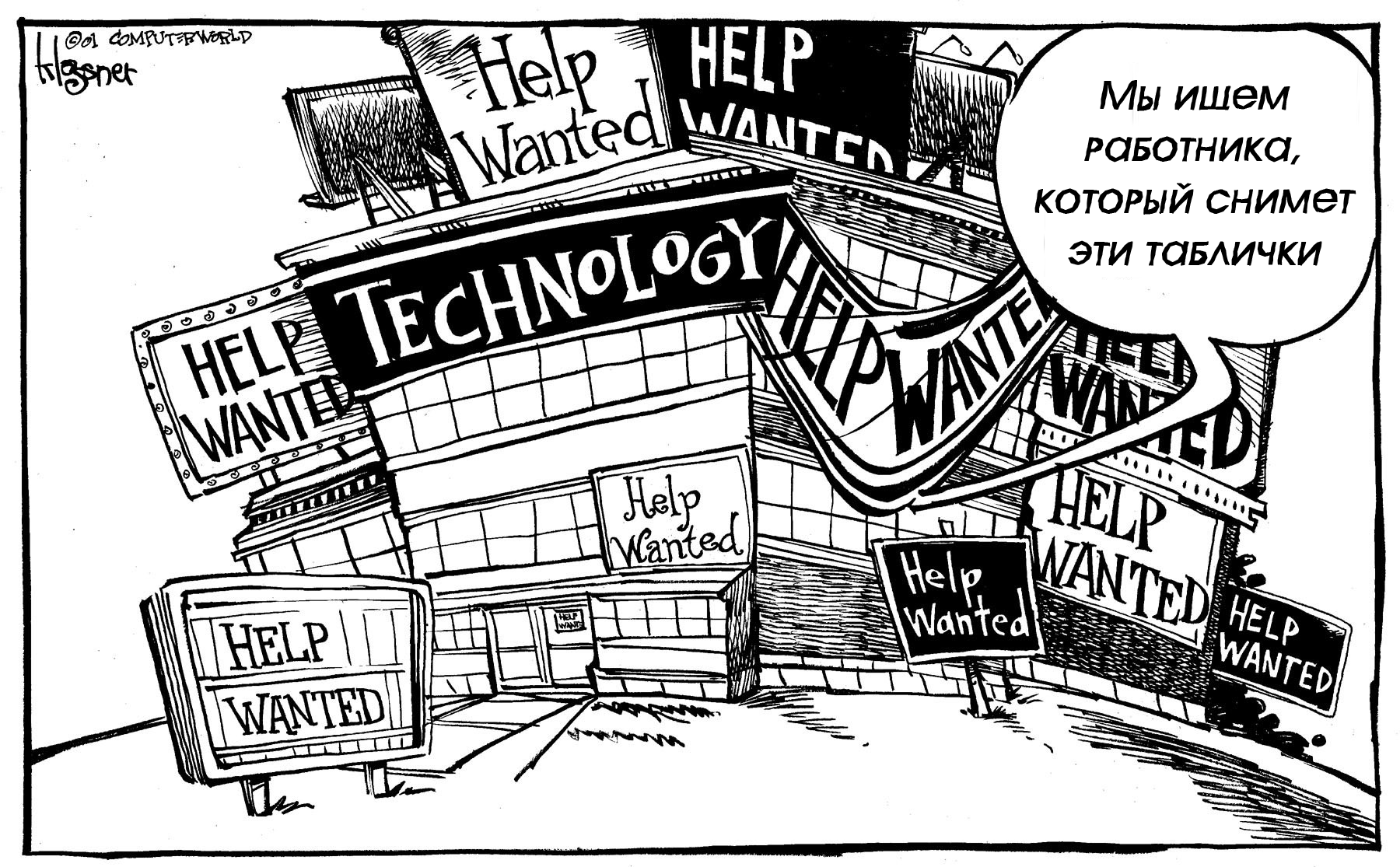
Caricature 2001: The only job available this year is to take last year’s vacancies.
At that time, as not everyone got used to the thought of the crash of dotcoms, the IT services market and the economy as a whole again suffered from the tragic events of September 11. As IT specialists adapted to the new reality, they longed for the hospitable days of the end of the last century.
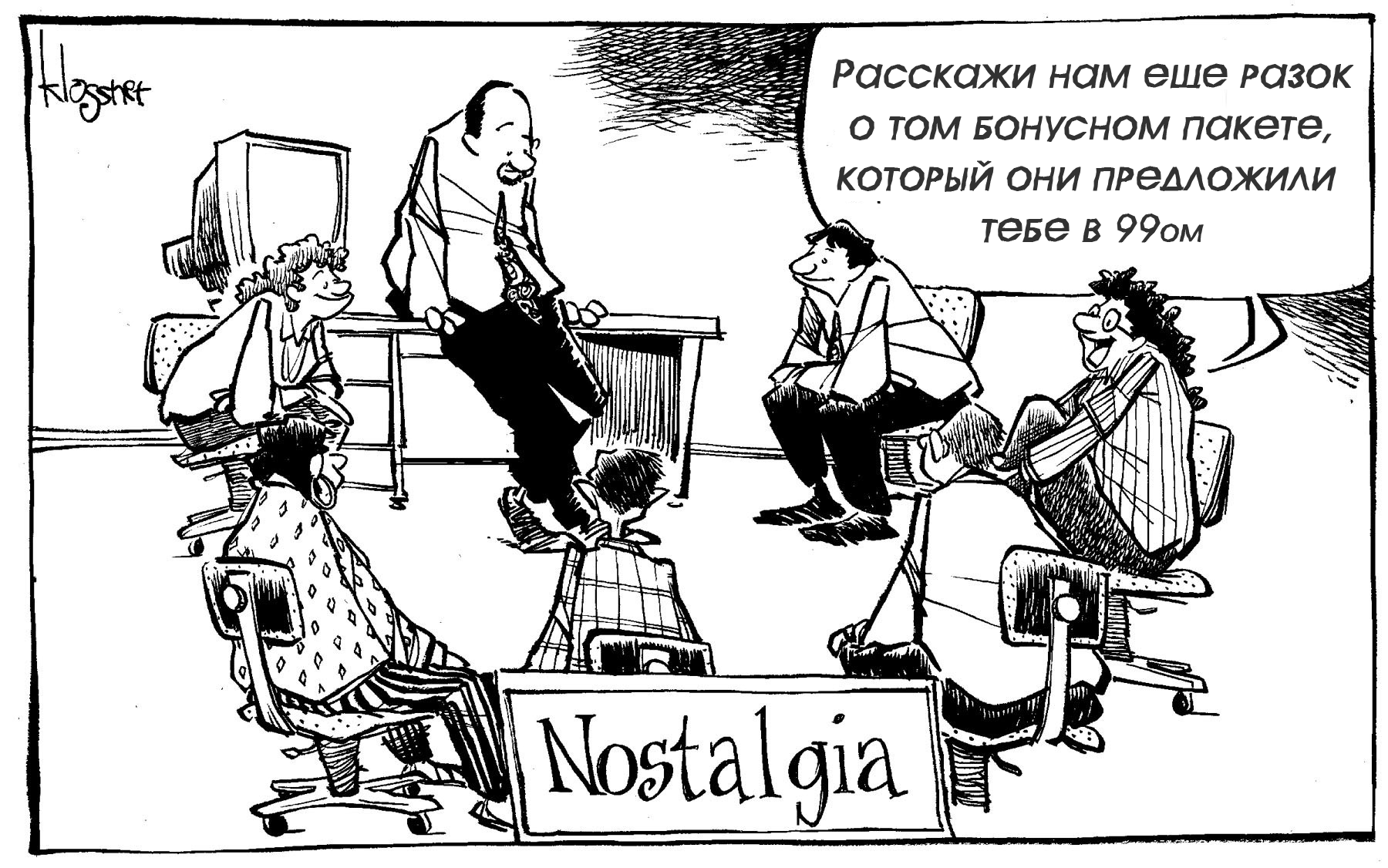
Caricature of 2001: IT specialists recall the good old days.
When hard times come, take a look at a career in a new light.
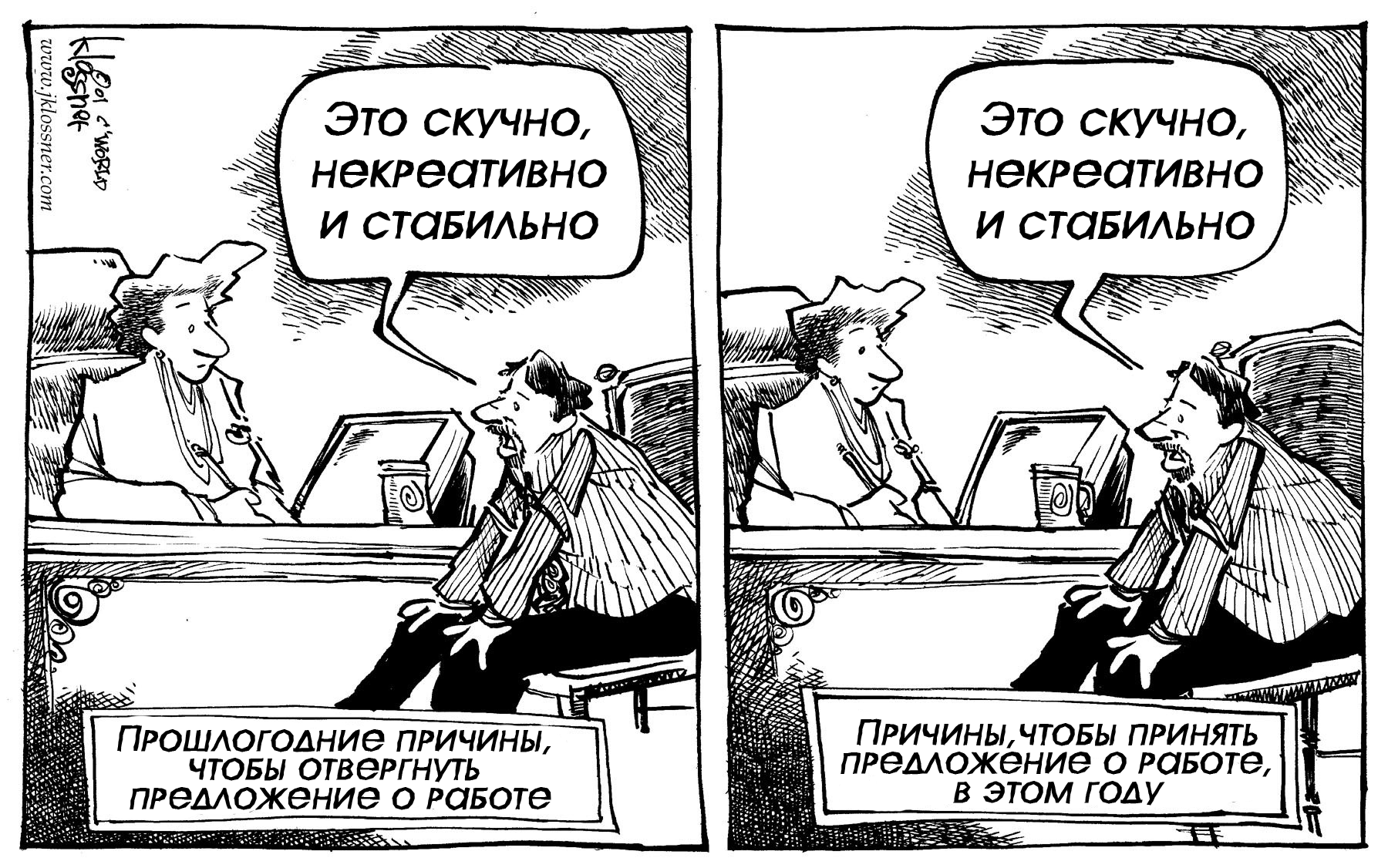
News of the time told about the existing shortage of IT-specialists with experience in Cobol and other mainframe programming languages.
At least since 2002, it has been reported that there is a shortage of personnel in Cobol, and the situation will worsen because the old mainframe specialists will soon retire, and young programmers are not interested in learning in this direction.
This may seem like a small problem, but, as noted in 2006, Cobol did not die definitively, and more than 60% of respondents to IT managers survey conducted by Computerworld said that their organizations still use Cobol applications. This percentage changed slightly in a similar study that was conducted six years later.
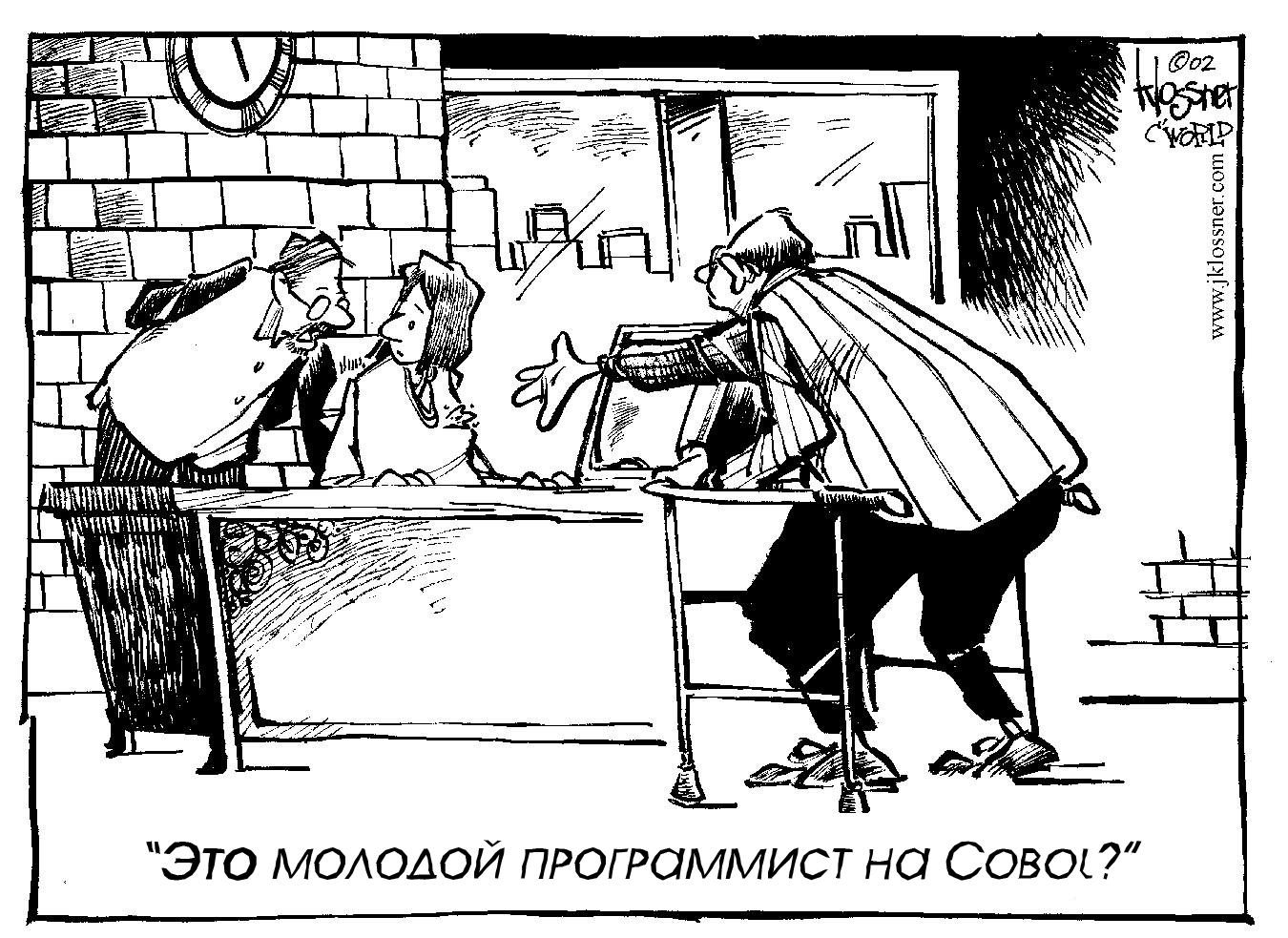
2002 Caricature: Man Using a Walker
As the layoffs after the crisis stopped, the employment prospects for some IT specialists began to improve slightly. But employers were looking for people who had a business acumen and interpersonal skills in addition to technical knowledge. One of the observers summed up the employers' point of view: "If you are just going to offer me technical skills, I could hire an offshore outsourcer and get them much cheaper."

Think gig economy is a new idea? Nope Just a new name for self-employment. At the end of 2013, there was a big surge of self-employment among IT-specialists, but this was not an initiative of workers thinking like entrepreneurs, seeking freedom. The reason was the desire of employers who did not want to hire full-time workers.

The IT labor market is not always what it seems. Vacancy announcements can be one of the main reasons for false impressions: companies can open vacancies by thousands per year, but the number of people they hire is often much less because they redistribute space within the company, outsource their work, postpone hiring or withdraw vacancies. .

Caricature of 2014: IT employers: many vacancies, little recruitment.
The use of H-1B visas is full of controversy, and in 2015 another possible source of controversy emerged: age discrimination. Short-term work visas are intended mainly for persons under the age of 35 years. An analysis of 2014 government data showed that of all H-1B applications approved this year, almost 75% were from people who were 34 years old or younger. Of this group, 38% were aged 29 or younger.

Caricature of 2015: IT people in 35 years.

About the IT budget.

On the problems of computer security.
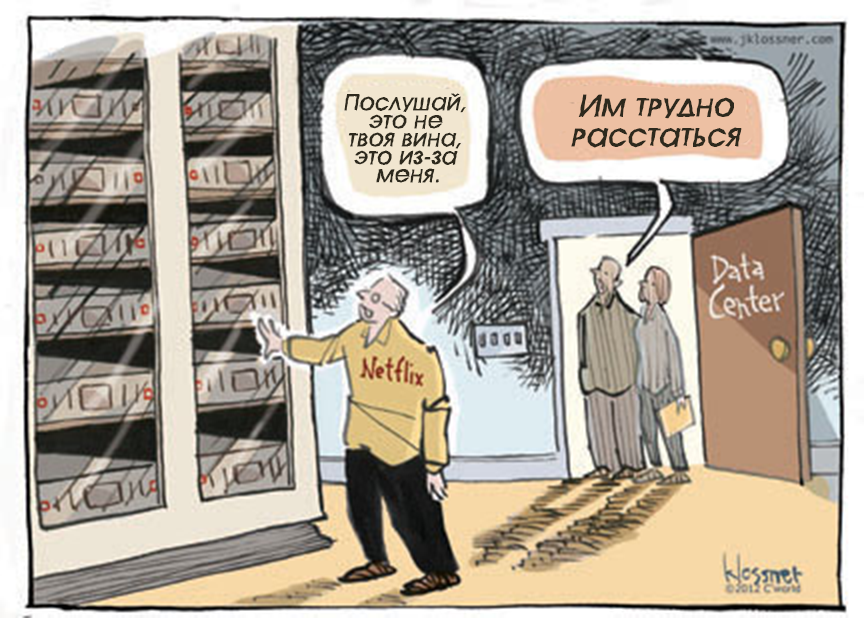
On the transition to cloud technology.
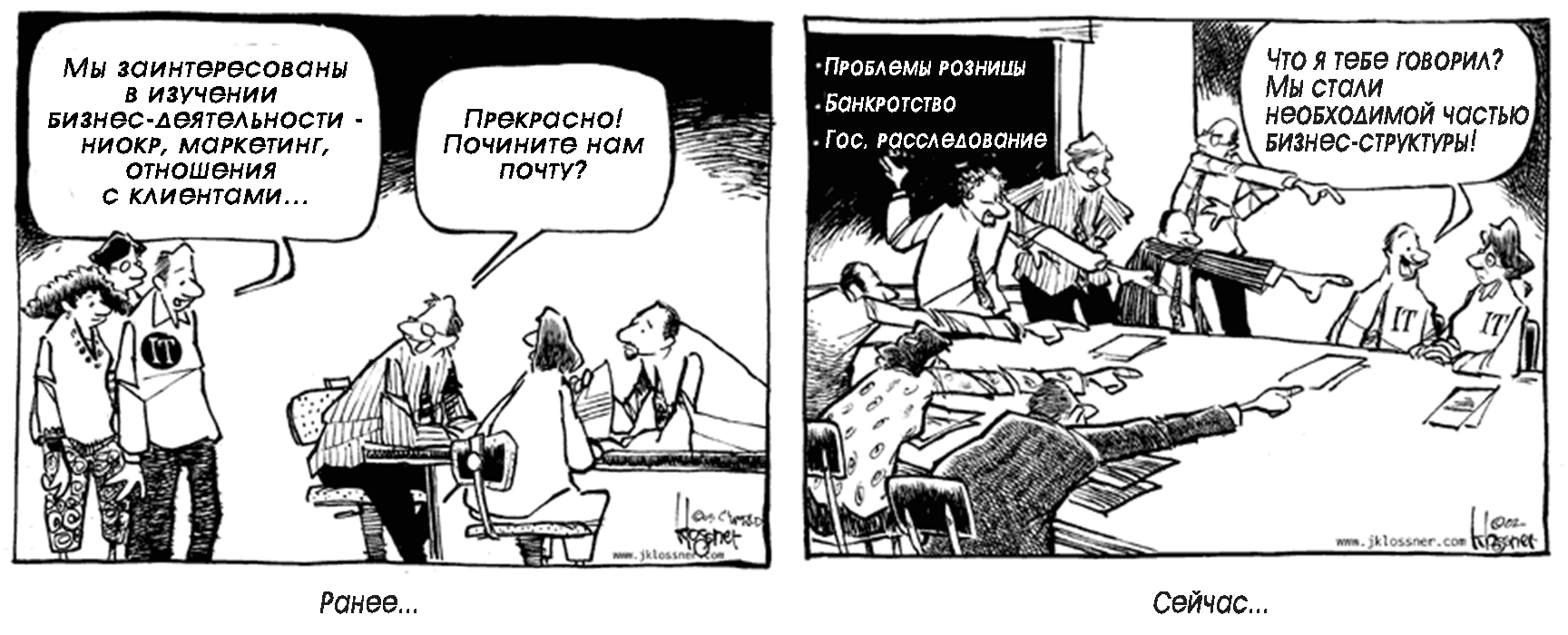
On the growing importance of IT-specialists over the past half century.
This publication contains the work of John Klossner (John Klossner). He has been drawing caricatures for Computerworld since 1996. His work has also appeared in a wide variety of print and electronic publications, including The New Yorker, Barron's, Federal Computer Week and The Wall Street Journal.
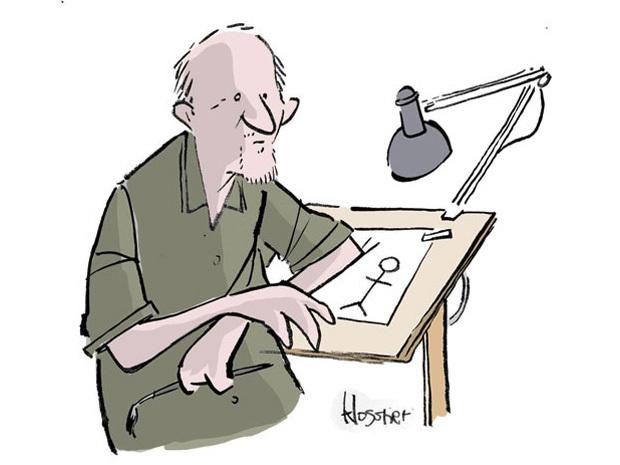
But hard-working IT-specialists are familiar with the other side of the coin. Changes in the IT industry occur "as in a pressure cooker", wages and employment opportunities change at the whim of market cycles. The skills demanded today are already becoming a heavy burden tomorrow, and the threat of outsourcing appears before every seemingly protected employee.
The ups and downs of the IT labor market in the first 50 years of its existence have provided caricaturist John Closner with many ideas. Let's take a look at the past and see what has changed (and has not changed) over the years.
')
February 2013: Management expectations

June 1999: Who qualifies as an IT employee?
In the late nineties, Microsoft was embroiled in an eight-year lawsuit with long-term contractors, also called "permatemps". IT entrepreneurs began to wonder whether it was a mistake to classify part of workers as contractors if they worked together full time and performed the same functions. And the editorial caricature in June 1999 suggested that it might not be so easy to draw a dividing line.


Caricature of 1999: Is a pizzeria courier considered an IT employee?
November 1999: Hard work is a reward in itself.
As in any other profession, IT has its own unique problems, ups and downs. But regardless of the circumstances, the hiring managers, filled with enthusiasm, are always able to look at the situation from the bright side.

Caricature 1999: The hiring manager campaigns.
April 2001: Boom and Recession
Bubbles and the inevitability of the fact that they will explode one day seem to be a part of life in IT. However, the end of the dotcom boom in the early 2000s was especially depressing.

Caricature 2001: The only job available this year is to take last year’s vacancies.
October 2001: New Reality
At that time, as not everyone got used to the thought of the crash of dotcoms, the IT services market and the economy as a whole again suffered from the tragic events of September 11. As IT specialists adapted to the new reality, they longed for the hospitable days of the end of the last century.

Caricature of 2001: IT specialists recall the good old days.
December 2001: Boredom is not a curse
When hard times come, take a look at a career in a new light.

March 2002: Cobol is dead, long live Cobol!
News of the time told about the existing shortage of IT-specialists with experience in Cobol and other mainframe programming languages.
At least since 2002, it has been reported that there is a shortage of personnel in Cobol, and the situation will worsen because the old mainframe specialists will soon retire, and young programmers are not interested in learning in this direction.
This may seem like a small problem, but, as noted in 2006, Cobol did not die definitively, and more than 60% of respondents to IT managers survey conducted by Computerworld said that their organizations still use Cobol applications. This percentage changed slightly in a similar study that was conducted six years later.

2002 Caricature: Man Using a Walker
December 2010: Outsourcing as an economic barometer
As the layoffs after the crisis stopped, the employment prospects for some IT specialists began to improve slightly. But employers were looking for people who had a business acumen and interpersonal skills in addition to technical knowledge. One of the observers summed up the employers' point of view: "If you are just going to offer me technical skills, I could hire an offshore outsourcer and get them much cheaper."

January 2014: Who needs full employment?
Think gig economy is a new idea? Nope Just a new name for self-employment. At the end of 2013, there was a big surge of self-employment among IT-specialists, but this was not an initiative of workers thinking like entrepreneurs, seeking freedom. The reason was the desire of employers who did not want to hire full-time workers.

February 2014: Smoke, mirrors and job ads
The IT labor market is not always what it seems. Vacancy announcements can be one of the main reasons for false impressions: companies can open vacancies by thousands per year, but the number of people they hire is often much less because they redistribute space within the company, outsource their work, postpone hiring or withdraw vacancies. .

Caricature of 2014: IT employers: many vacancies, little recruitment.
September 2015: Retirement at 35
The use of H-1B visas is full of controversy, and in 2015 another possible source of controversy emerged: age discrimination. Short-term work visas are intended mainly for persons under the age of 35 years. An analysis of 2014 government data showed that of all H-1B applications approved this year, almost 75% were from people who were 34 years old or younger. Of this group, 38% were aged 29 or younger.

Caricature of 2015: IT people in 35 years.
Some more topical caricatures

About the IT budget.

On the problems of computer security.

On the transition to cloud technology.

On the growing importance of IT-specialists over the past half century.
Get to know the cartoonist.
This publication contains the work of John Klossner (John Klossner). He has been drawing caricatures for Computerworld since 1996. His work has also appeared in a wide variety of print and electronic publications, including The New Yorker, Barron's, Federal Computer Week and The Wall Street Journal.

Source: https://habr.com/ru/post/328336/
All Articles